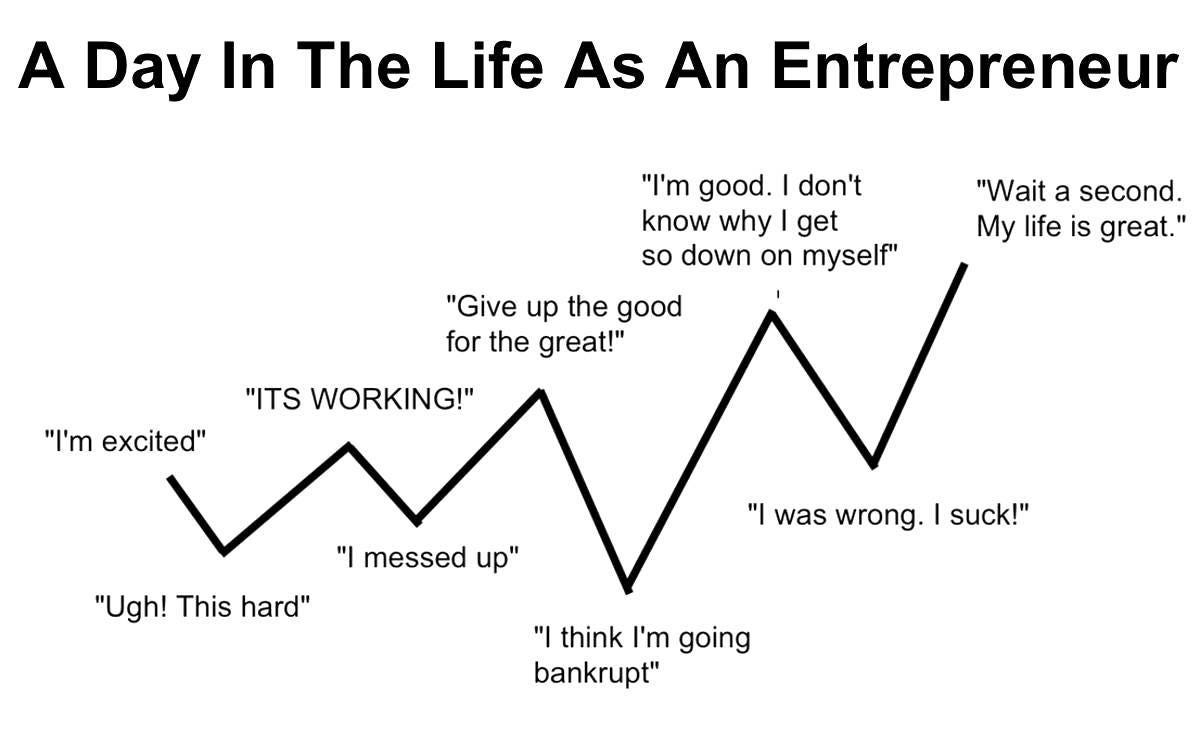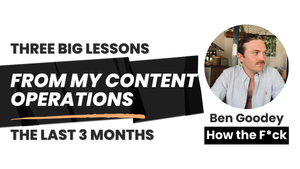+ some easter eggs
Hey friends,
I haven’t written about content ops in a while, so piecing this together was a reminder of my love of the subject—nerd alert.
My operation has been pretty low-key for a few months now, but as I scale it back up for some upcoming projects I'm glad to have had these recent lessons.
Without further ado, here are my “three big content ops lessons from the last three months”.
P.S. Readers who make it to the end will also find a couple of tools & must-read recommendations.
1/ Failures happen, and that’s a good thing.

These past months, I had several unexpected failures in my otherwise pretty smooth content operation.
For example, one of my trusted writers decided to focus elsewhere—leaving a gap of 5 articles to fill before the end of the month.
Far from being frustrating, each unexpected event only helped refine my processes.
The breakdowns gave my operation a much-needed stress test. It became clear where complacency had crept in (e.g. dependence on any one writer without backup) and the changes implemented only made my agency stronger.
I’ve been publishing relatively low volumes of content recently, as I scale back up, these have been invaluable reminders of the holes that need plugging.
Operational breakdowns are all part of the process—it’s how you respond that matters.
2/ A new source of great writers.
Excellent writers—especially those with niche-relevant experience—are in hot demand right now.
But finding those writers is still a "needle in a haystack" situation. Lots of not-so-good writers muddy the waters (which is why a huge part of my Content Operations book focused on sourcing and testing writers).
Recently, my hack has been to ask writers I already trust who they trust.
This hack works, I think, because your trusted writers know your quality expectations and budget, and can matchmake you with writers they’ve worked with in the past.
3/ Templates create efficiencies (but also make better content).
As you'll likely know, the more SEO content you produce, the more you notice the patterns. Many keywords fall into familiar buckets like “Best {Category} Software” or “What is {X}?”.
In these moments, I’m a big fan of starting my briefing process with templates. For example, I’ve put a ton of effort into crafting one particular template and I use it all the time.
However, the template is not the be-all and end-all of the content brief. It's just the starting point—the basic architecture of the piece.
The template gives the heading structures, but then I adjust everything based on the nuances of competition, intent, and the industry.
I find there are several “big” benefits to starting this way:
- The obvious one: It saves time. One session of over-thinking and perfectionism, reused 100s of times. It dramatically cuts the thinking and strategizing time down for making a balanced, well-structured article.
- That time allows the brief maker to focus on making the content spicy. Finding unique research, data, audience insights, etc are all high-value parts of my brief-making process. Now, you have more time for them.
- It helps with testing. Rolling out a similar content structure across multiple clients and reviewing results is a good way to test what works and what doesn’t. You can then tweak the original template, and continuously improve results for all clients moving forward.
There we have it—three big lessons (and reminders) from the past three months.
Thanks for reading ✌️
May your operations be forever efficient.
—Benny
Random Recommendations:
1/ A tool: SEOTesting - [this is not sponsored] - this SEO tool has quickly become a useful part of my tech stack. You can note down experiments and track their impact super easily. I also love the reports, which are like a layer on top of Google Search Console to identify things like cannibalization and decay.
2/ A good read: Cyrus Shephard did a big correlation study across 50 sites to analyze the winners and losers from the latest algorithm updates—and importantly, what factors they had in common.
In the image below are the "website features" that correlated with traffic wins and losses. I’m pleased to see first-person and first-hand experience have positive correlations—I pivoted all my clients towards experience-led, first-person content a few months back anticipating this may become important.
Don't forget there's tons of content to read in the backlog here.


